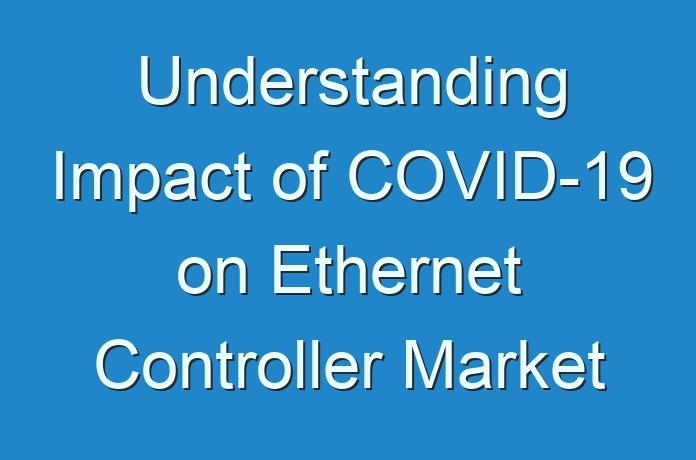
Ethernet controller is a component of computer hardware used for controlling the connection to wired networks. It is a vital component for managing Internet connections and other related network functions. Also, computers in a network communicate with each other with the help of Ethernet controller. It decodes the data received from the Internet cable into a form which could be easily recognized by the computer. Ethernet controller reviews each packet of data and determines whether the data is required for local computer or any other computer on the network. If the information is meant for local computer it will be accepted and information meant for other computers will be discarded. Most of the new generation computers have built in Ethernet controllers; however, older versions of computer used network interface cards having an Ethernet controller chip. Software drivers are used in order to manage the Ethernet controllers.
Increased penetration of Internet and related services worldwide has resulted in rising demand for Ethernet controllers used in devices such as personal computers and laptops. Also, failure of Ethernet controllers results in loss of Internet connection and instead of buying a new device, customers prefer to replace the controller due to the low cost. USB Ethernet controllers provide mobility and in case of failure new USB controller could be easily installed by simply plugging the device in the computer or laptop. USB capability has increased the overall popularity of Ethernet controllers due to the ease of use and portability. Ethernet controller also performs an important function of receiving and transmitting data related to bidirectional data bus used for data transfer within microprocessor and memory input or output devices. Ethernet controllers obtain the IP address from dynamic host control protocol (DHCP) server. It helps in sending the right information to their respective destinations. Integration of Ethernet controller with the microcontrollers is expected to drive the demand for Ethernet controller market. Microcontrollers are small computers on a single integrated circuit, it contains input/output peripherals, processor core and memory. Products such as telephones, automobiles and other home appliances use microcontrollers for control purpose. As the requirements for microcontroller increases, the Ethernet controllers used in these microcontrollers are also experiencing growing demand. New gigabit Ethernet controllers are helping to reduce the cost related to supporting components such as crystals and bridge chips. Also, these controllers provide full integration and interface capabilities with media access control (MAC) and physical-layer (PHY). However, the Ethernet controllers depend on the specifications of systems for stable performance. Whether the controller supports the current Mach version or other functionalities such as threading must be checked.
Planning to lay down future strategy? Perfect your plan with our report sample here https://www.transparencymarketresearch.com/sample/sample.php?flag=S&rep_id=13802
Ethernet controllers are managed through the software drivers installed in the computer. New and advanced drivers of Ethernet controllers are providing enhanced functionality such as the ability to communicate from the computer to any specific device. These advanced software applications are expected to provide tremendous growth opportunities for the Ethernet controller market. Major players in the Ethernet controller market include Renesas Electronics Corporation, Intel Corporation, OMRON Corporation, Cirrus Logic Inc., Silicon Laboratories, Inc., Microchip Technology Inc., Mindspeed Technologies, Inc., Broadcom Ltd. and Siemens AG.
The report offers a comprehensive evaluation of the market. It does so via in-depth insights, understanding market evolution by tracking historical developments, and analyzing the present scenario and future projections based on optimistic and likely scenarios. Each research report serves as a repository of analysis and information for every facet of the market, including but not limited to: Regional markets, technology developments, types, applications, and the competitive landscape.
The study is a source of reliable data on:
- Key market segments and sub-segments
- Evolving market trends and dynamics
- Changing supply and demand scenarios
- Quantifying market opportunities through market sizing and market forecasting
- Tracking current trends/opportunities/challenges
- Competitive insights
- Opportunity mapping in terms of technological breakthroughs
The regional analysis covers:
- North America (U.S. and Canada)
- Latin America (Mexico, Brazil, Peru, Chile, and others)
- Western Europe (Germany, U.K., France, Spain, Italy, Nordic countries, Belgium, Netherlands, Luxembourg)
- Eastern Europe (Poland, Russia)
- Asia Pacific (China, India, Japan, ASEAN, Australia and New Zealand)
- Middle East and Africa (GCC, Southern Africa, North Africa)
Looking for exclusive market insights from business experts? Buy Now Report here https://www.transparencymarketresearch.com/sample/sample.php?flag=S&rep_id=13802
TMR estimates the market size of various sectors using a combination of available data on the number and revenue of companies within each sub-sector and tiers of companies. The basic components used to determine market size and forecast for a specific product area are not only limited to supply-side data, but are also related to demand, industry trends, and the economic outlook. All the above data points are utilized to generate a statistical model targeting the sector marketplace. More than 300 TMR analysts across the world integrate these elements into a framework to determine the subsector market size for a base year and then forecast growth within each market.
TMR regularly interviews technology and business professionals as an ongoing effort to track the latest developments within each sector. These continuous surveys are stratified by company size and industry segment and weighted to reflect the global market place. All data are collected on an ongoing effort through a structured questionnaire rolled over the web or conducted via telephones. This provides the TMR team opportunities to request for detailed question sets, complex skip patterns, and real-time calculations, which assists respondents in answering questions involving numbers and percentages. Respondents, who are interviewed as experts, are screened and qualified based on certain criteria in addition to their decision-making authority and the scope of activity within their organizations.





